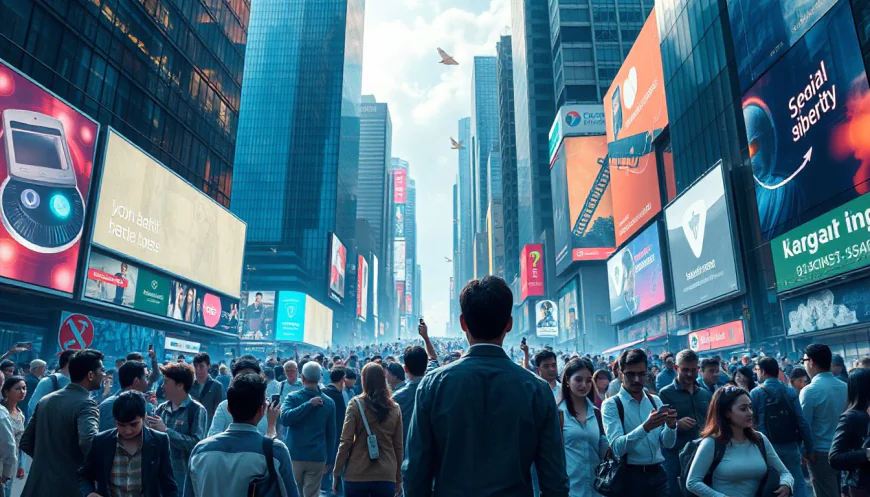Caste, Class, and Code: Navigating Social Hierarchies in the Digital Age
Social hierarchies haven't disappeared with the rise of the internet. They're just changing form. Traditional ideas of caste and class still shape how people access resources and opportunities. Now, with digital platforms everywhere, these old divisions get magnified or challenged. For society to move forward — and for individuals to feel empowered — understanding how these hierarchies operate online is more important than ever.

Understanding Social Hierarchies: Caste and Class in Context
Historical Foundations of Caste and Class Systems
Across the globe, caste and class have long set social rules. In India, caste has defined roles and stuck people in certain places for centuries. Elsewhere, social class, like working, middle, and upper classes, determines wealth and power. These systems turn personal identity into a part of history — shaping who gets access to education, jobs, and influence.
The Intersection of Caste, Class, and Society
Caste and class aren’t separate; they often collide and reinforce each other. Someone born into poverty might also face caste discrimination or social stigma. These barriers make it hard to climb up the ladder, even when new chances appear. Despite social changes, many still face persistent inequality rooted in these old hierarchies.
The Contemporary Relevance of Caste and Class
Today, the gap between rich and poor keeps widening. Data shows that socioeconomic disparities are even more visible online. People with more resources tend to have better access to the internet, devices, and education. Globalization pushes these inequalities further, making some feel left behind while others thrive in connected worlds.
The Digital Shift: How Technology Reshapes Social Hierarchies
Digital Platforms as New Social Spaces
Social media, forums, and apps are now part of our daily lives. They create new places where people connect, share, or even judge. Sometimes, these spaces reinforce old hierarchies by giving more power or visibility to influential groups. Other times, they challenge them by giving everyone a voice.
Caste and Class Dynamics Online
It's common to see caste-based discrimination on platforms like Facebook or Twitter, especially in India. Privileged groups might use the internet to reinforce stereotypes, while marginalized voices fight back. Your online footprint — what you post or share — can either keep you stuck or help you rise above social barriers.
The Power of Digital Connectivity
The internet offers chances for those on the fringes to talk loud and be seen. Small entrepreneurs from rural areas succeed thanks to e-commerce platforms. Marginalized groups can build communities, push for change, and challenge traditional hierarchies. But beware: echo chambers and biases can also spread faster online, trapping people in old beliefs.
Navigating and Challenging Hierarchies Through Code and Digital Literacy
The Role of Digital Literacy in Empowerment
Knowing how to code, think critically, and understand media can open doors. Digital literacy means much more than just using social media. It's about being aware of how technology can help or hurt your chances. Learning these skills helps you take control of your digital life with integrity.
Coding, Algorithms, and Bias
Behind every app or website, algorithms sort and rank things. Unfortunately, algorithms can carry biases, favoring certain groups over others. As developers, we need to build digital tools that treat everyone fairly. Breaking those biases starts with awareness and intentional design.
Policy and Advocacy in the Digital Age
Advocates fight for fair access and protection online. Good policies can prevent digital discrimination and improve access for underserved communities. Organizations focused on digital inclusion work to close the digital divide, making tech a tool for everyone, not just the privileged few.
Case Studies and Real-World Examples
Social Media Movements Against Caste Discrimination
Platforms like Twitter are now hubs for social movements. Campaigns like #JusticeForDalit highlight caste discrimination, pushing change both online and offline. These movements show how digital tools can rally people and demand attention.
Digital Entrepreneurship and Economic Mobility
People from marginalized backgrounds are turning to e-commerce and apps to grow their income. Small shop owners use Facebook or WhatsApp to reach customers, breaking down old barriers. Success stories like these prove that digital platforms can boost economic mobility.
Educational Initiatives and Digital Access
Many projects focus on closing the education gap in underserved areas. Through mobile tech or free Wi-Fi, students get opportunities they didn't have before. These initiatives are slowly reshaping access to knowledge and breaking down the old hierarchies linked to wealth and social status.
Challenges and Ethical Considerations
Digital Divide and Access Inequality
Not everyone can get online easily. Statistics show that millions still struggle with internet access, especially in rural areas. Promoting digital access means investing in infrastructure and affordable tech to bring everyone into the digital fold.
Privacy, Surveillance, and Social Hierarchies
Some groups face more digital surveillance — which can become a tool of control. Marginalized communities are often targeted more heavily. Protecting privacy and designing ethical tech should be top priorities for everyone involved in creating digital spaces.
Managing Misinformation and Bias
Fake news spreads fast online — often reinforcing stereotypes or social divides. Developing skills in digital literacy helps users spot misinformation. Tech companies must also work harder to keep the information accurate and fair.
Conclusion
The way social hierarchies look today is changing, but they haven't disappeared. Technology can be a tool for breaking down old barriers or reinforcing them. With better digital skills, smarter algorithms, and inclusive policies, we can create online spaces that promote fairness. It’s up to us — individuals, developers, and leaders — to shape these digital worlds for a more equitable future. Staying aware, acting ethically, and pushing for change can make all the difference.



 VARSHITHA
VARSHITHA